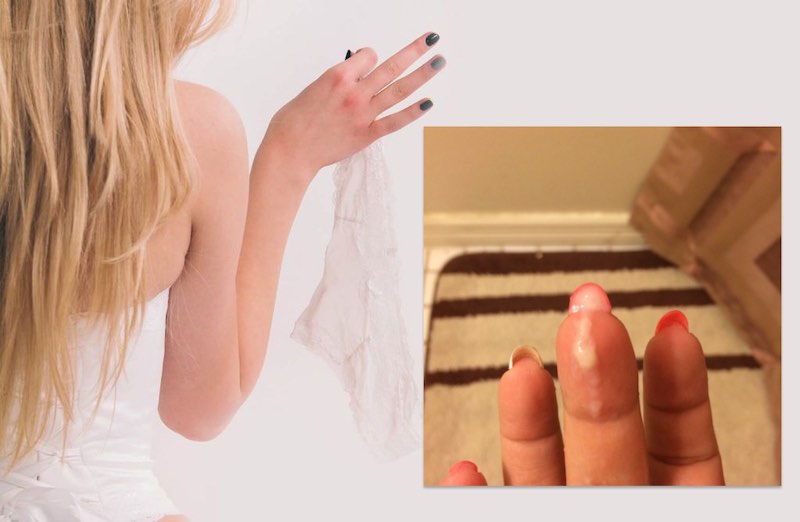What is leukorrhea causes and symptoms?
What is leukorrhea causes and symptoms?
Leukorrhea
Leukorrhea is a medical term that refers to a white or yellowish vaginal discharge. It can be a normal physiological response or a sign of infection or other medical conditions, depending on the cause.
Leucorrhea is a white discharge from the vagina, which is generally normal and healthy as it helps cleanse the vagina by shedding cells and fluids, removing germs, and preventing infections. However, if the discharge changes in color, consistency, or develops an odor, it may signal an underlying issue. If you notice these changes, it’s important to consult a gynecologist for further evaluation.

Types of Leukorrhea:
- Physiological Leukorrhea:
- Occurs due to hormonal changes, particularly during ovulation, pregnancy, or sexual arousal.
- The discharge is usually clear or white, odorless, and does not cause irritation.
- Pathological Leukorrhea:
- May indicate an infection, such as a yeast infection, bacterial vaginosis, or sexually transmitted infections (STIs).
- The discharge may be thick, have an unpleasant odor, and be accompanied by itching, redness, or irritation.
What are the causes of likoria?
Some possible likoria causes are:
Leukorrhea, commonly referred to as “likoria” in some regions, is a condition characterized by excessive vaginal discharge. While vaginal discharge is normal and can vary throughout the menstrual cycle, excessive or abnormal discharge may indicate an underlying issue. Some common causes of leukorrhea include:
-
Hormonal Imbalance:
- Pregnancy: Increased estrogen levels during pregnancy can lead to more vaginal discharge.
- Menstrual Cycle: Variations in hormones during different phases of the menstrual cycle can cause leukorrhea, especially around ovulation.
- Infections:
- Bacterial Vaginosis (BV): An overgrowth of harmful bacteria in the vagina can lead to a grayish or whitish discharge with a foul smell.
- Yeast Infections (Candidiasis): A fungal infection caused by Candida can lead to thick, white discharge resembling cottage cheese, accompanied by itching and irritation.
- Sexually Transmitted Infections (STIs): Certain STIs, such as gonorrhea, chlamydia, or trichomoniasis, can cause abnormal vaginal discharge that may be yellow, greenish, or foul-smelling.
-
Poor Hygiene:
- Improper or infrequent cleaning of the genital area, especially during menstruation, can result in bacterial growth, leading to leukorrhea.
- Foreign Objects:
- Forgotten tampons, contraceptive devices, or other foreign objects in the vagina can cause irritation and infection, leading to discharge.
- Vaginal Atrophy:
- Postmenopausal women may experience thinning of the vaginal walls due to decreased estrogen, leading to discharge, dryness, and irritation.
- Allergic Reactions or Irritation:
- Vaginal discharge may be a response to irritants like soaps, perfumes, or chemicals in personal care products. Allergies to latex condoms or certain types of lubricants can also trigger leukorrhea.
- Cervical Polyps or Inflammation:
- Conditions like cervical polyps or inflammation (cervicitis) may cause vaginal discharge, often with other symptoms like bleeding after intercourse.
-
Pelvic Inflammatory Disease (PID):
- An infection of the reproductive organs can lead to abnormal vaginal discharge, often accompanied by pelvic pain and fever.
- Stress or Poor Diet:
- Stress, malnutrition, or a diet lacking in essential nutrients may impact vaginal health, sometimes resulting in leukorrhea.
In most cases, leukorrhea is not a serious condition, but when it’s accompanied by unusual odor, itching, irritation, or discomfort, it’s important to seek medical advice for diagnosis and treatment.

Common Causes:
- Hormonal fluctuations (menstruation, pregnancy, menopause)
- Infections (yeast infections, bacterial vaginosis, STIs like chlamydia or gonorrhea)
- Irritation from chemicals (douches, scented soaps, or contraceptive devices)
What are the symptoms of likoria ???
The symptoms of leukorrhea (likoria) can vary depending on the underlying cause. While some vaginal discharge is normal, certain signs may indicate an abnormal condition. Here are the common symptoms associated with leukorrhea:
-
Excessive Vaginal Discharge:
- The primary symptom of leukorrhea is an increase in the amount of vaginal discharge, which may be white, yellowish, or slightly gray.
- Changes in Discharge Consistency:
- The discharge may be thick, watery, or frothy. In cases of yeast infections, it might appear thick and resemble cottage cheese.
-
Foul Odor:
- Leukorrhea due to bacterial infections like bacterial vaginosis or sexually transmitted infections (STIs) may have a fishy or unpleasant smell.
-
Itching or Irritation:
- Many women experience itching, burning, or irritation in the vaginal or vulvar area, especially in cases of yeast infections or allergic reactions.
- Pain or Discomfort:
- Pain or discomfort in the pelvic region, or during urination or intercourse, can occur in cases where leukorrhea is associated with infections or conditions like pelvic inflammatory disease (PID).
- Color Changes in Discharge:
- Discharge color may vary depending on the cause:
- White or Clear: Often seen with hormonal changes (e.g., pregnancy, ovulation).
- Yellow or Greenish: May indicate a bacterial or sexually transmitted infection.
- Grayish: Often seen in bacterial vaginosis.
- Lower Abdominal Pain:
- In some cases, leukorrhea can be accompanied by lower abdominal pain, particularly when caused by conditions like PID or other infections.
-
Burning Sensation During Urination:
- If leukorrhea is caused by an infection, you may experience a burning sensation when urinating.
- Frequent Urination:
- Increased urinary frequency may accompany leukorrhea in certain cases, especially when there is an infection affecting the urinary or reproductive organs.
- Vaginal Dryness (in some cases):
- Postmenopausal women or those with vaginal atrophy may experience both excessive discharge and dryness or irritation.
If leukorrhea is accompanied by symptoms like itching, foul odor, pelvic pain, or an unusual color or consistency of the discharge, it’s essential to seek medical evaluation to rule out infections or other conditions.
I am giving the actual easy leukorrhea treatment in my next article. You may read that article treatment of leukorrhea.
If anyone want to more information please send to me your question through the given email address.
Email address: mallicktarun@rocketmail.com
For getting treatment base suggestion please contact or request an appointment.
